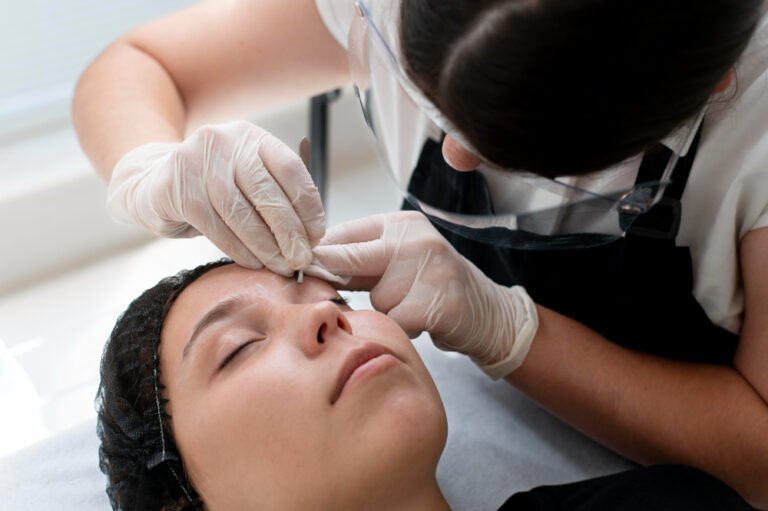When considering hairline correction surgery, one of the most important decisions you’ll face is choosing the right hair transplant technique. The two most common methods are FUT (Follicular Unit Transplantation) and FUE (Follicular Unit Extraction). Each technique has unique advantages and disadvantages that affect the surgery outcome, recovery, and long-term results.
Understanding the differences will empower you to make an informed choice based on your hair goals, lifestyle, and preferences.
What Are FUT and FUE?
- FUT (Follicular Unit Transplantation), also called the “strip method,” involves surgically removing a strip of scalp from the donor area (usually the back of the head). The strip is then dissected into individual follicular units for transplantation. The donor area is closed with sutures, leaving a linear scar.
- FUE (Follicular Unit Extraction) involves extracting individual hair follicles directly from the donor area using a tiny punch tool. These follicles are then implanted into the recipient site. This technique avoids a linear scar and leaves small, dot-like scars that are less noticeable.
Pros and Cons of FUT for Hairline Correction
Pros
- Higher Graft Yield: FUT can harvest a larger number of grafts in a single session, which is beneficial for extensive hairline reconstruction or large balding areas.
- Cost-Effective: Generally, FUT costs less than FUE due to shorter procedure time and simpler equipment.
- Potentially Better for Coarse Hair: The strip method can provide thicker follicular units, which may be advantageous for patients with coarse or curly hair.
Cons
- Linear Scar: The most significant downside is a visible linear scar on the donor area, which can be problematic for patients who prefer very short haircuts.
- Longer Recovery: The donor site requires stitches and takes longer to heal, often with more discomfort compared to FUE.
- Less Suitable for Multiple Sessions: Scar tissue may limit future harvesting in the same area if additional sessions are needed.
Pros and Cons of FUE for Hairline Correction
Pros
- Minimal Scarring: FUE leaves tiny dot scars that are virtually undetectable, making it ideal for patients who like short hairstyles.
- Faster Recovery: Since there’s no large incision or stitches, healing time is shorter with less discomfort.
- Flexibility for Multiple Sessions: Because follicular units are extracted individually, patients can undergo several sessions if needed.
- Ideal for Small to Medium Sessions: Perfect for hairline corrections requiring precision and natural-looking results.
Cons
- Longer Procedure Time: Extracting follicles one by one is time-consuming, especially for large sessions, often requiring multiple days or sessions.
- Higher Cost: The complexity and duration typically make FUE more expensive than FUT.
- Potential for Lower Graft Yield: The number of viable follicles harvested per session may be less than FUT.
Which Technique is Better for Hairline Correction?
Choosing between FUT and FUE depends on your:
- Extent of Hairline Correction: Large or very dense corrections might favor FUT, while precision shaping and smaller corrections suit FUE.
- Scarring Concerns: If you want minimal visible scarring, FUE is preferable.
- Hair Characteristics: Coarse or curly hair might respond better to FUT.
- Budget and Time: FUT is generally quicker and less expensive; FUE offers more comfort but costs more and takes longer.
- Future Plans: If you anticipate multiple surgeries, FUE offers more flexibility.
Combining FUT and FUE
In some cases, surgeons use a combination of FUT and FUE to maximize graft yield and optimize the hairline’s appearance. This hybrid approach can deliver dense, natural results but requires a highly skilled surgeon.
Final Thoughts
Both FUT and FUE have proven effective in hairline correction surgery. Your choice should align with your personal goals, lifestyle, and comfort level. Consult with a qualified hair restoration specialist who can recommend the best technique based on your individual case.




